Table of Contents
Mari Mari Cultural Village, Sabah, Borneo, Malaysia – A Window To The Tribes Of Sabah
The very first place we visited on our Sabah tour was the Mari Mari Cultural Village which is a fascinating showcase of the ethnic tribes and culture of the Sabah state of Malaysia.
We thought it was a fitting start to our exploration of Kota Kinabalu the capital of Sabah in Malaysian Borneo. Learning about the ethnic people of a region not only makes for an interesting experience, but it also provides a meaningful backdrop to further exploration of the region.
Be it the ethnic tribes of Jharkhand, Arunachal Pradesh, Andhra Pradesh of India or the indigenous people of Cambodia, the subject has always been close to our heart and hence the visit to the Mari Mari village Kota Kinabalu promised to be an exciting and enlightening affair. An ideal way to kick off our Sabah itinerary.
Kionsom Waterfalls – A Prelude To Our Mari Mari Cultural Village Tour
The sunlight from the east made its way into the room. The sight of Mount Kinabalu bathed by the morning light presented an energizing sight. We left the comfortable environs of the Avangio Hotel where we were staying after a quick breakfast for our visit to the Mari Mari Cultural Village.
The distance of Mari Mari Cultural Village from our hotel was around 13 km. and involved a drive of about 20 minutes. We were a bit early and hence our guide for the day Jennifer from the Best Delight Travel & Tours Sdn Bhd informed us that we would visit a waterfall nearby as we had time before the Mari Mari Cultural Village opened.
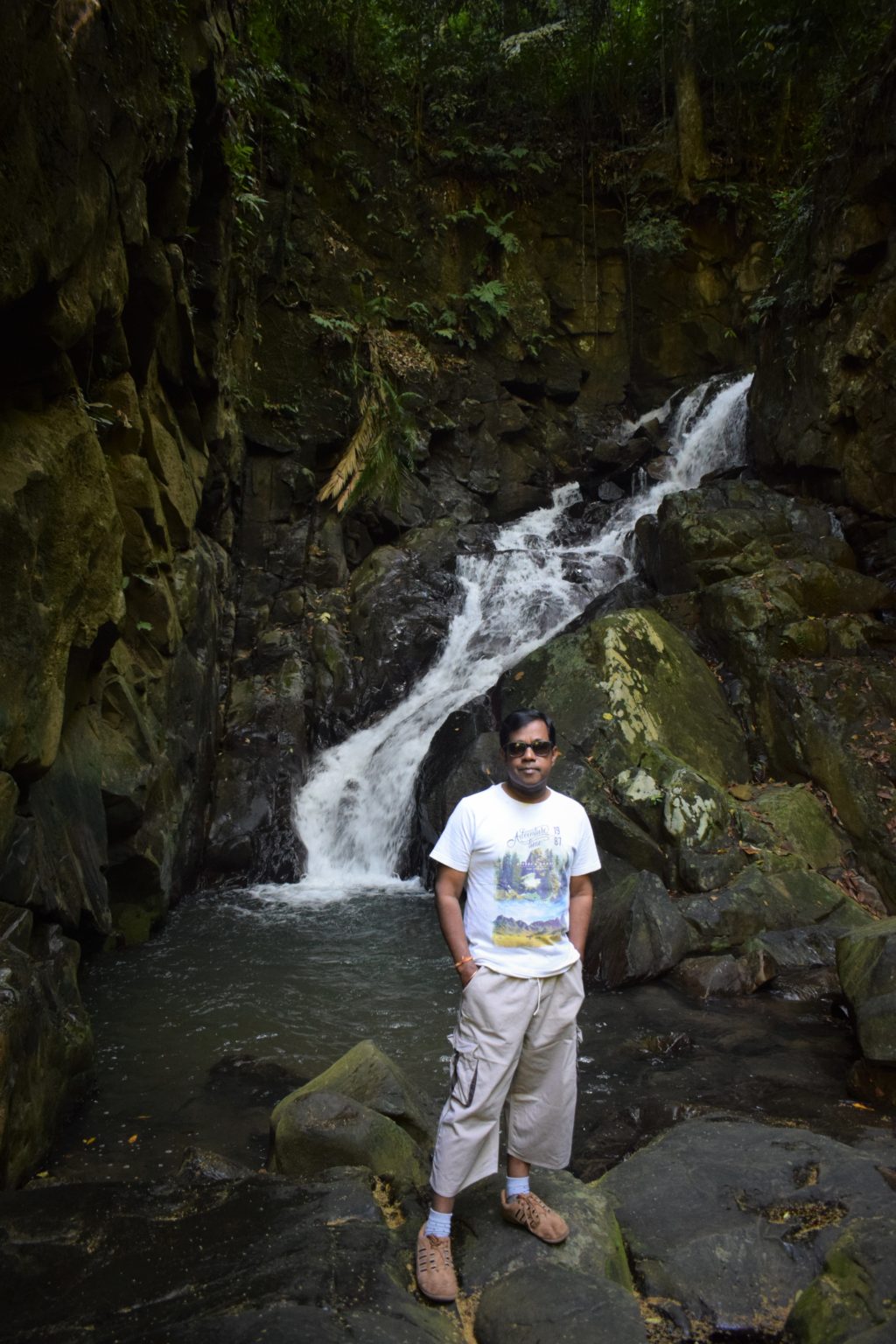
A waterfall is always something that soothes the mind wherever you are. The cascading waters create a sound of music which is instantly rejuvenating to the senses. So we found ourselves in the enchanting environs of the Kionsom waterfalls. Tucked away on the fringe of the forests, the waterfall was a welcome start for the day.
There were no other visitors apart from our group and we basked in the sight of the cascading falls touching the rocky terrain and forming a gurgling rivulet. There was an enchanting garden with a cemented path that leads to the falls. The garden contains a series of waterfalls of varying heights.
As we were there for a short time we spent time only at one of the falls. The place is a popular picnic spot for the residents of Kota Kinabalu who want to get away from the urban center into the lap of nature.
Mari Mari Cultural Village Tour
“Mari Mari”, said our guide as we congregated near the reception area of the Mari Mari Cultural Village. What he meant by that was, “come, come”, which is what Mari Mari means.
Our smiling guide from the Mari Mari Culture Village gave us a quick introduction of the place and also informed us about the itinerary that we would be following. He briefly outlined the activities that we would be doing during our half-day tour of the Mari Mari Cultural Village.
About Mari Mari Cultural Village
The Mari Mari Cultural Village itinerary takes you on a journey of learning and experiencing the diverse culture of some of the ethnic tribes from the Borneo island. The Mari Mari Village is essentially like a living museum that provides a window to the culture and way of life of its indigenous people.
Our guide made it very clear at the outset that the village is a replica which showcases the culture and day-to-day lives of 5 important tribes of Borneo. One gets to see the houses in which these tribes lived as well as experience their cuisine and have a peep at their daily lives.
The Tribes of Sabah
The Mari Mari Cultural Village takes you close to the lives of five different tribes of Sabah namely, Murut who are known to have been head hunters, Bajau who are called as the Cowboys and Sea Gypsies, Rungus who are known for their longhouses, Lundayeh who have been basically fishermen and hunters, and Kadazan-Dusun who have been rice farmers and form the largest indigenous group of people in Sabah.
Our Experience At Mari Mari Cultural Village – Things To Do
We followed our guide across a swinging wooden bridge built across a rivulet that gurgled across the rocky surface below. The bridge did bring back memories of the Canopy walk that we had done a couple of years ago at the Nyungwe National Park in Rwanda, a couple of years ago. But of course, crossing this small swinging bridge was literally child’s play compared to that, though fun nonetheless.
A multi-sensory experience awaits you at the Mari Mari Cultural Village. You not only see the homes, traditional dresses, and lifestyles of the different tribes, but you also get hands-on experience. You get to taste different traditional and authentic food prepared in real-time in front of you as well as taste traditional rice wines and honey.
You can listen to traditional music and even try your hand at some of the traditional sports. In many ways, the village is a multi-dimensional and interactive museum. Some may feel that the place is touristy and snigger that they prefer the “real thing”.
We agree that it is touristy, however, it is a great way to learn about the culture of five different tribes spread across the Borneo island at one place. The Mari Mari Village acquaints you with its indigenous people in a fun way and makes for an enjoyable half-day trip for the entire family.
Check out our Mari Mari Cultural Village Video for some glimpses of our experience.
Visiting The House Of The Dusun Tribe
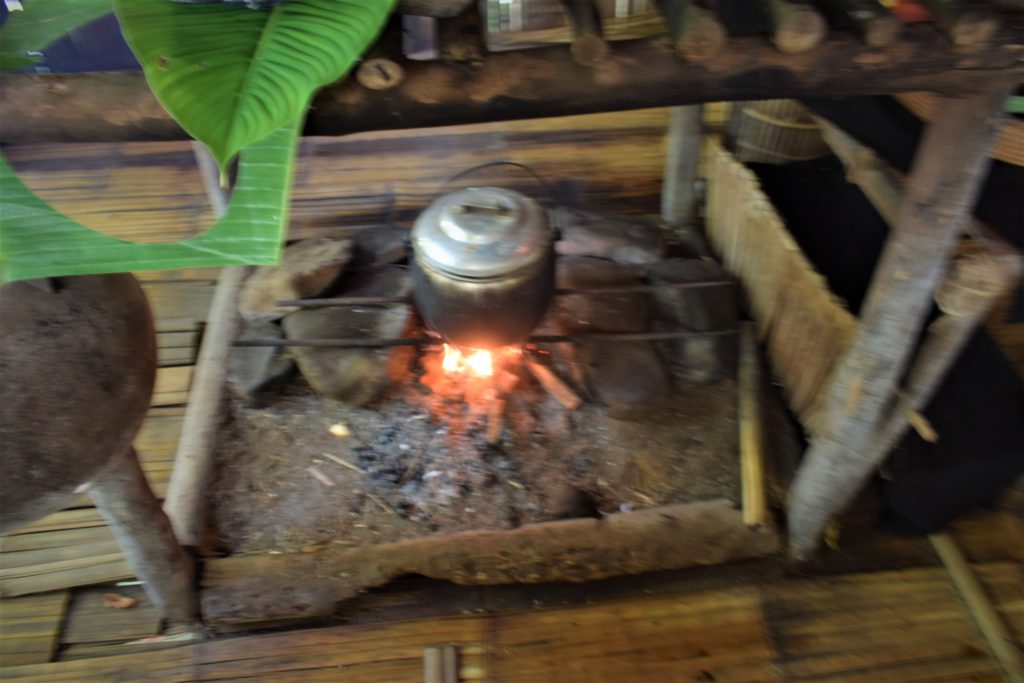
The Mari Mari Cultural Village tour consists of visiting the houses that are exact replicas of actual tribal houses. These houses are ‘living’ houses with people in traditional dresses going about their daily chores. There are women in the kitchen cooking who will offer you delicacies straight from the frying pan. So our first call was to the house of the Dusun tribe.
The Dusun tribe is also referred to as Kadazan-Dusun. This is the largest ethnic group of Sabah. The people are traditional rice farmers and trace their origins to Nunuk Ragang which is a site that they believe is their original homeland.
The site is located near a village called Tampias. However, there has been no archaeological activity to establish this fact. The origins of the Dusun tribe is definitely an interesting puzzle for anthropologists to unravel.
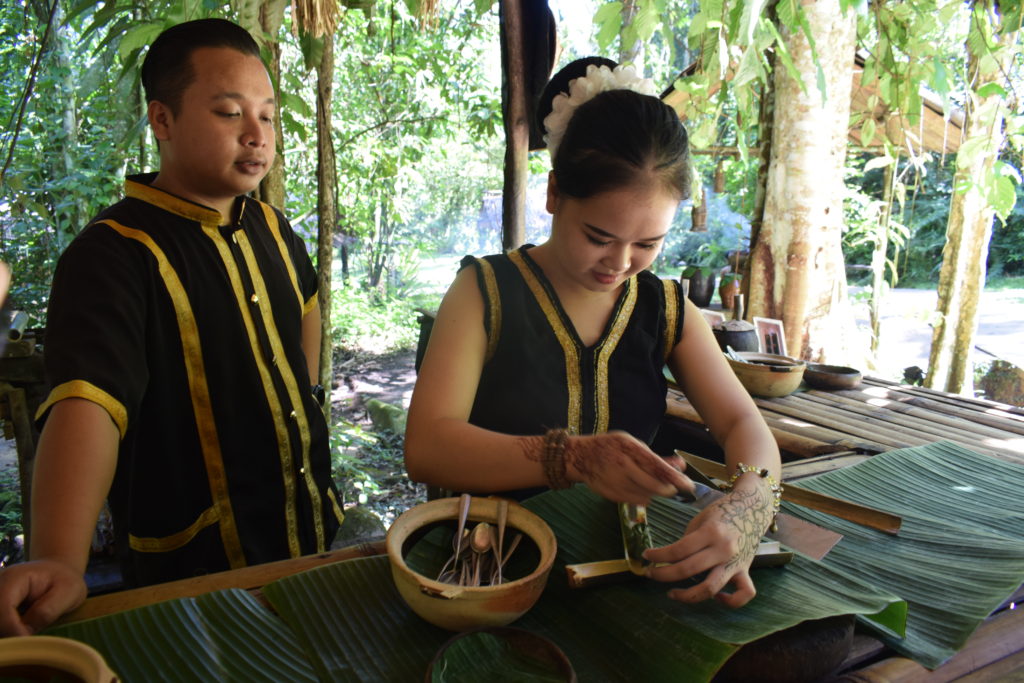
As we climbed the bamboo stairs and entered the house of the Dusun tribe, a wave of deja vu swept over us. What we saw inside heightened this feeling. The walls of the room were lined with mysterious-looking earthen jars sealed at the top.
They reminded you of Ali Baba and the Forty Thieves, only the jars here were much smaller. We soon learned that the mysterious-looking jars contained ‘Lihing’, a traditional rice wine made by the Dusun tribe.
We were offered the wine for tasting in tiny porcelain cups. It was then that the realization dawned that what we were experiencing in the Dusun house was similar to our experiences with the Galo Tribe of Arunachal Pradesh in India. As we explored the house and the kitchen, we found a lot more similarities.
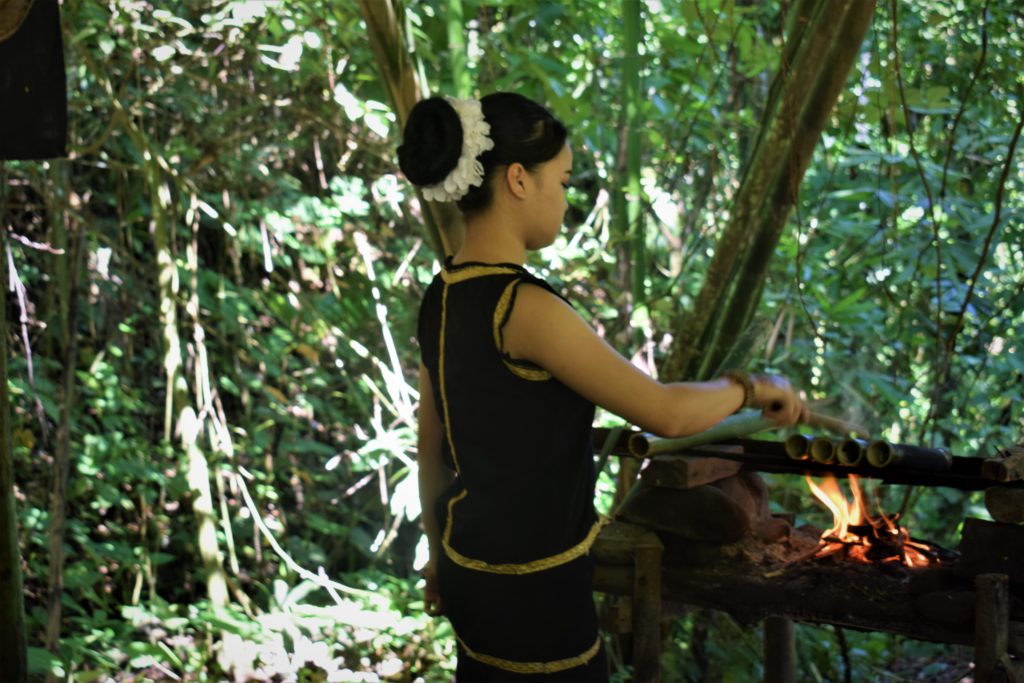
There was a fire in the kitchen over which a kettle boiled. Atop the fire, there was a platform which got heated slowly and was used for drying as well as could serve as a slow cooking place. The meat was cooked inside bamboo shoots and afterwards, the bamboo was sliced away to take out the cooked food.

There was another stall made of bamboo outside the Dusun house that demonstrated the making of another type of rice wine called Montoku through a process of distillation.
The Dusun tribe originally practised a religion of animism which is founded on the belief that everything in nature be it plants, trees, animals or other objects has a spiritual identity of its own. With the advent of modernization and development, a majority of the Dusun people now practice Christianity and are integrated into the mainstream of society.
Visiting The House Of The Rungus Tribe
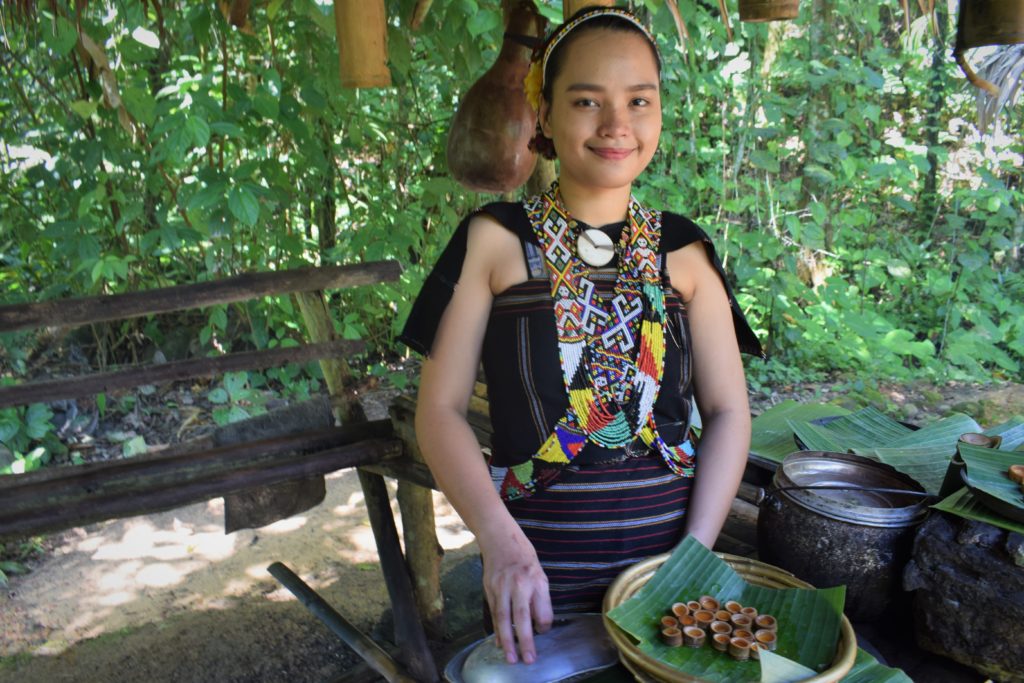
Our next house of call was the house of the Rungus Tribe. This is the fourth largest of the tribes of Sabah. They are reputed to be good honey collectors and are skilled at it. They use an innovative method to extract honey with the help of a cylindrical object made of bamboo.
A pretty girl dressed in the traditional black dress of the Rungus tribe offered us small porcelain vials of honey to taste. She was also bedecked with colorful ornaments made from beads which the Rungus womenfolk make.
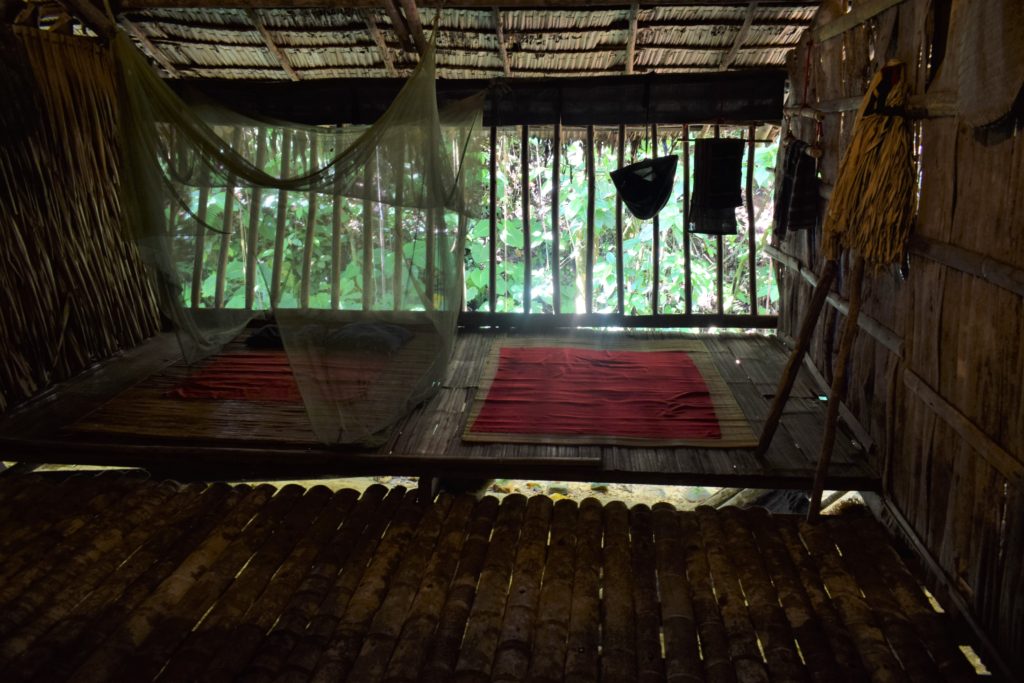
One of the most distinctive features of the Rungus people is their longhouses. These are long rectangular structures of bamboo. There is a long common hall to one side and rooms on the other.
Each room is inhabited by one family. A traditional longhouse can consist of as many as 75 rooms! Is that not a great example of community living? Traditionally the entire village used to live in a longhouse with the central room being occupied by the village chief. Each family had its roles and duties earmarked.
A platform towards one end of the common hall overlooking the rooms was reserved for community activities.
Inside the longhouse, we were also treated to a fascinating demonstration of fire making with the use of bamboo only. We had known about the art of making fire with stones but doing that with only bamboos was something unique and interesting.
Visiting The House Of The Lundayeh Tribe
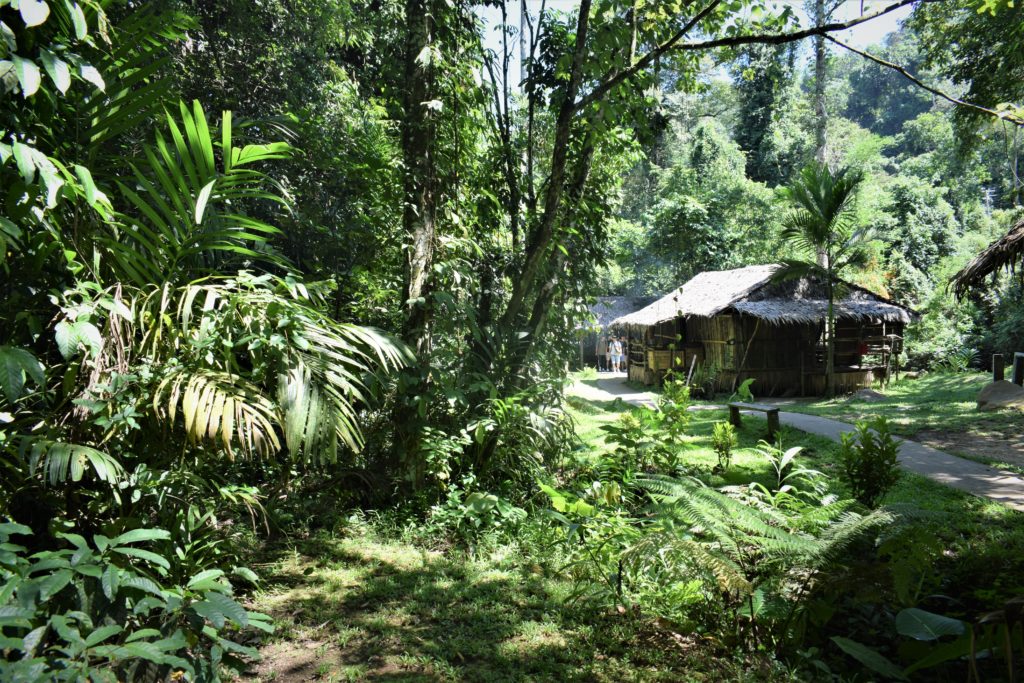
The house of the Lundayeh tribe was next up on our Mari Mari Cultural Village itinerary. The Lundayeh tribe is also referred to as Lun Bawang. This is an ethnic group that inhabits the central northern Borneo island and has origins in the highlands of North Kalimantan. The tribe is known to practice agriculture and hunting. This tribe too is known to have indulged in the practice of headhunting.
We entered the section that contained the traditional house of the Lundayeh tribe. On a bench made from bamboo poles inside a bamboo enclosure sat an “angelic headhunter”!
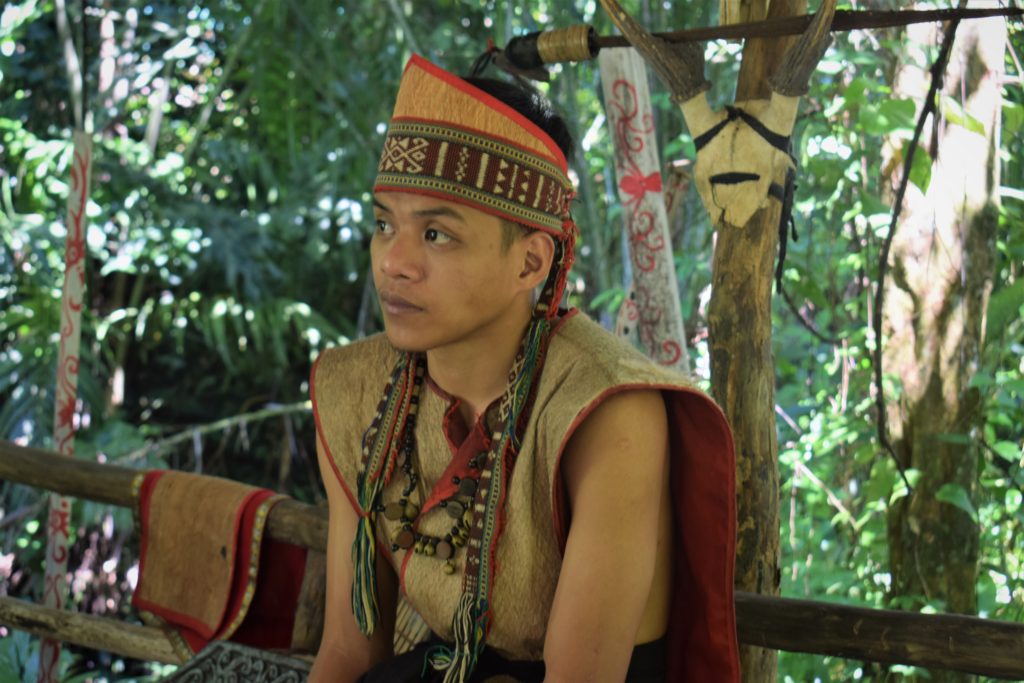
Pardon the oxymoron, but the face of this ‘headhunter’ was so docile and angelic that this figure of speech had to be severed from the grammar books that have been gathering dust for some time.
The “angelic headhunter”, who wore the traditional attire of the Lundayeh tribe which was made from the bark of trees looked really cute. He wore a jacket made from the bark of a tree, which is called Kuyu Talun. a loincloth, and a headgear which is known as Sigar. He also wielded an ominous-looking long machete that goes by the name pelepet.
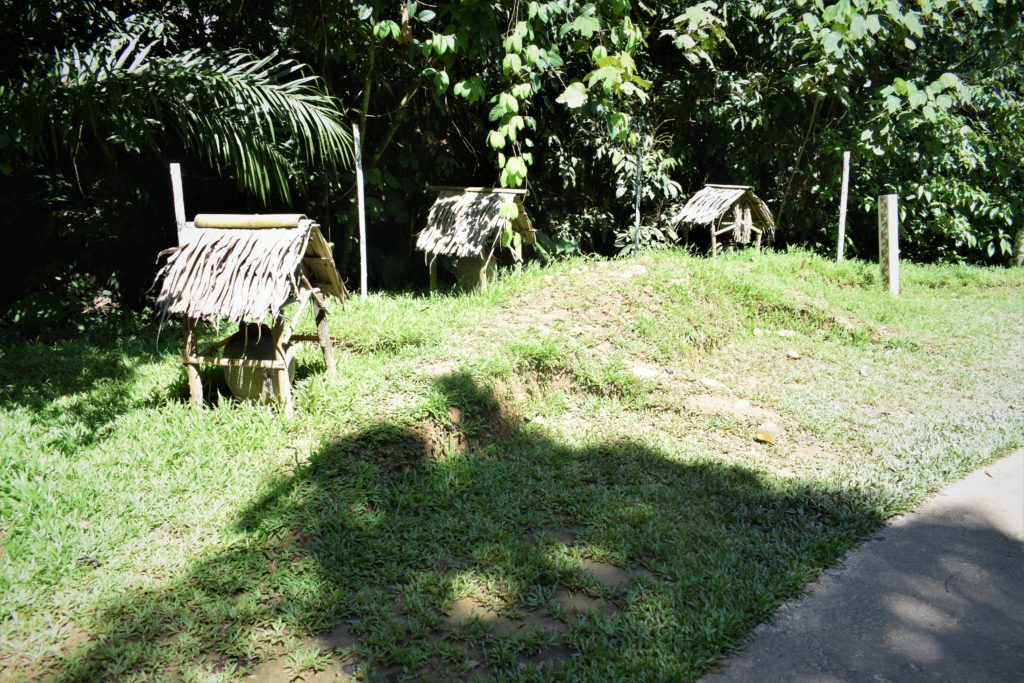
Outside the Lundayeh house, we found a huge mound of earth in a weird shape, closer inspection revealed that this was in the shape of a crocodile. The Lundayeh tribe worship the crocodile and consider it a symbol of strength.
It is said that in earlier times warriors used to dance around a wooden-shaped crocodile to celebrate victory over their enemies and after beheading them. Over the years the custom evolved into a ritual where a rice dish made in the shape of a crocodile is cooked. The dish named Luba Bayeh, or crocodile rice is prepared for special ceremonies like weddings, etc.
Visiting The House Of The Bajau Tribe
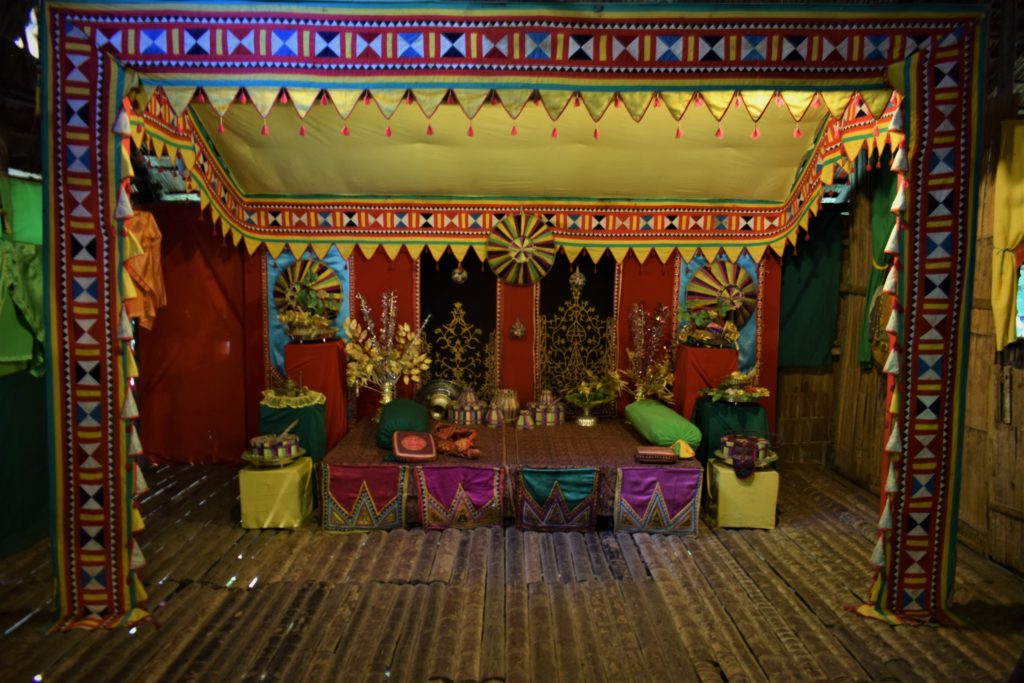
The Bajau tribe originate from the shores of the Philippines and is said to have settled in Sabah more than 500 years ago. The Bajau tribes are made up of two distinct groups, one known as ‘Cowboys of The East”, as they were traditionally horse breeders. This group is from the Kota Belud region.
Another group which was traditionally made up of nomadic seafarers is known as the Sea Gypsies. The Sea gypsies used to live on boats and later moved to houses on stilts near the shores. Even today these kinds of villages can be seen in Sabah.
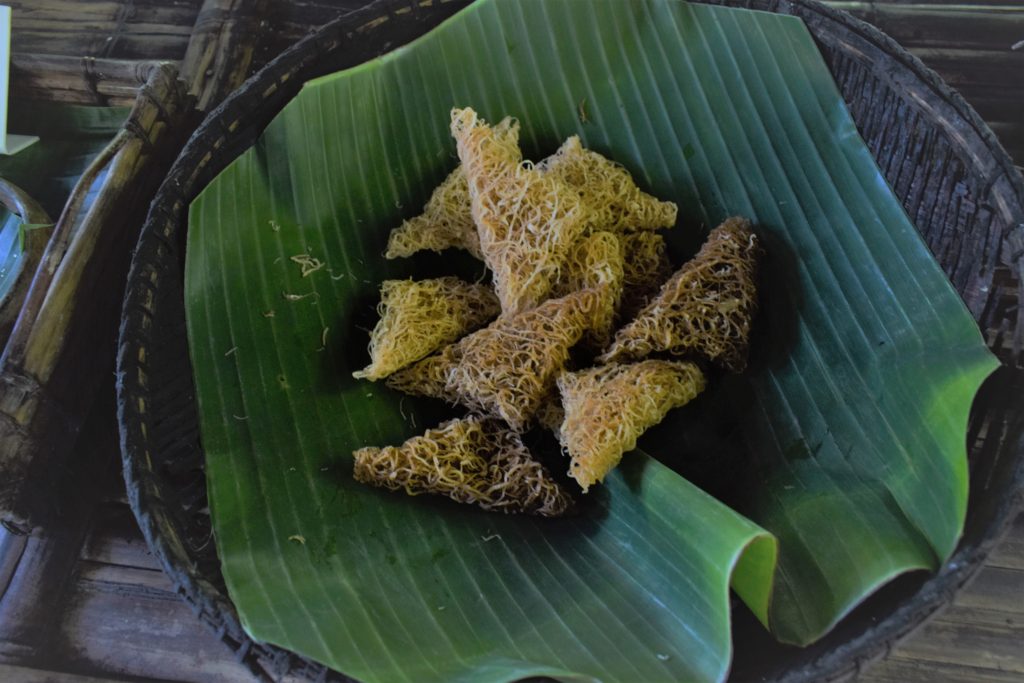
A woman dressed in the traditional Bajau dress was bent over a frying pan. She was making Kuih Jala a traditional snack. Triangular pieces of netted threads drawn from a concoction of rice flour and sugar.
We tasted the Kuih Jala which was crispy, mildly sweet and quite tasty at that. A glass of Pandan juice along with the Kuih Jala was really satisfying. Pandan juice for the uninitiated is an aromatic plant whose leaves are used for flavoring and cooking.
The typical ceremonial wedding setup which was very colorful and visually appealing riveted our attention inside the Bajau house. Another interesting attraction was the long and colorful kites that brought memories of our own kite festival in India.
Visiting The House Of The Murut Tribe

Last on the agenda but by no means, the least was a visit to the territory of the dreaded Murut tribe. This ethnic group is said to be the last of the groups that gave up the practice of headhunting. When this practice was in vogue, one of the pre-conditions for marriage was for the suitor to present at least one head of a vanquished enemy to the girl’s family!
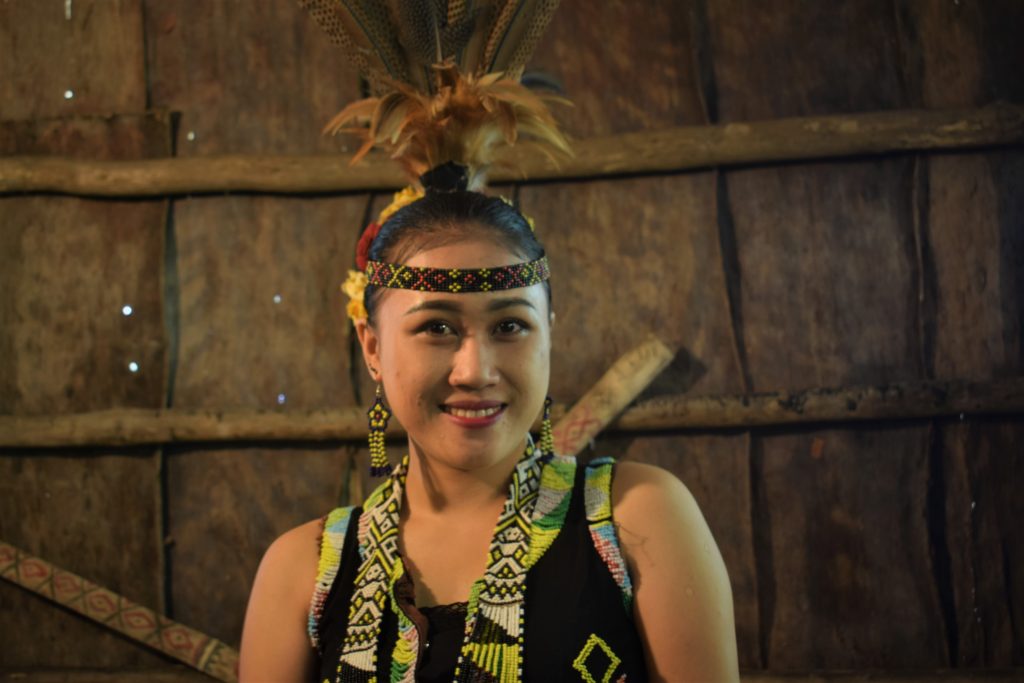
Entry to the village of the Murut Tribe can only be obtained after the group was ‘questioned’ by the chief of the village. Loud, blood-curdling cries rent the air as we approached the ‘village’. This, of course, is a simulated demonstration of how it used to be in the days of yore.
The Murut is the third largest ethnic group in Sabah. The tribe was traditionally into rice cultivation and hunting using blowpipes. It was interesting when we tried our hand with the blowpipe. The speed with which the dart flew and pierced a coconut kept in the distance was truly amazing.
The Murut tribe too lived in traditional longhouses. Inside the longhouse, one can get a tattoo design made from henna and also try jumping on a traditional bamboo trampoline to catch a booty hanging at a height.
Cultural Dance Performance

After an eventful interaction with the tribes of Sabah, it was time to sit back and enjoy a presentation of different tribal dances. The colorful costumes, hypnotic music, and rhythmic dances enthralled the audience.
One of the most fascinating dances was done with bamboo sticks held by dancers in two rows facing each other and another set of dancers dancing in the middle as the bamboo sticks were moved from side to side. The audience was invited to participate in this dance which was really a lot of fun and brought the half-day tour of Mari Mari Village to a fitting end.
Lunch At The Mari Mari Cultural Village
Our visit to the Mari Mari Cultural Village also included a buffet lunch. Visitors can opt for 3 different slots. The morning slot includes the village tour and lunch, if one opts for the afternoon slot, the package would include high tea, while the evening package includes dinner.
As the cuisine is traditional non-vegetarian, one would need to inform your guide beforehand if you are a vegetarian.
Our guide had thoughtfully enquired about our food preferences right at the start of the tour and informed the kitchen accordingly. So when we arrived at the cafeteria for lunch, he got vegetarian platters specially organized for us. There were assorted vegetables, fruits, and vegetable spring rolls which were quite nice. In addition, there was rice and an unlimited supply of water and coffee too.
Fun Things To Do In Mari Mari Cultural Park
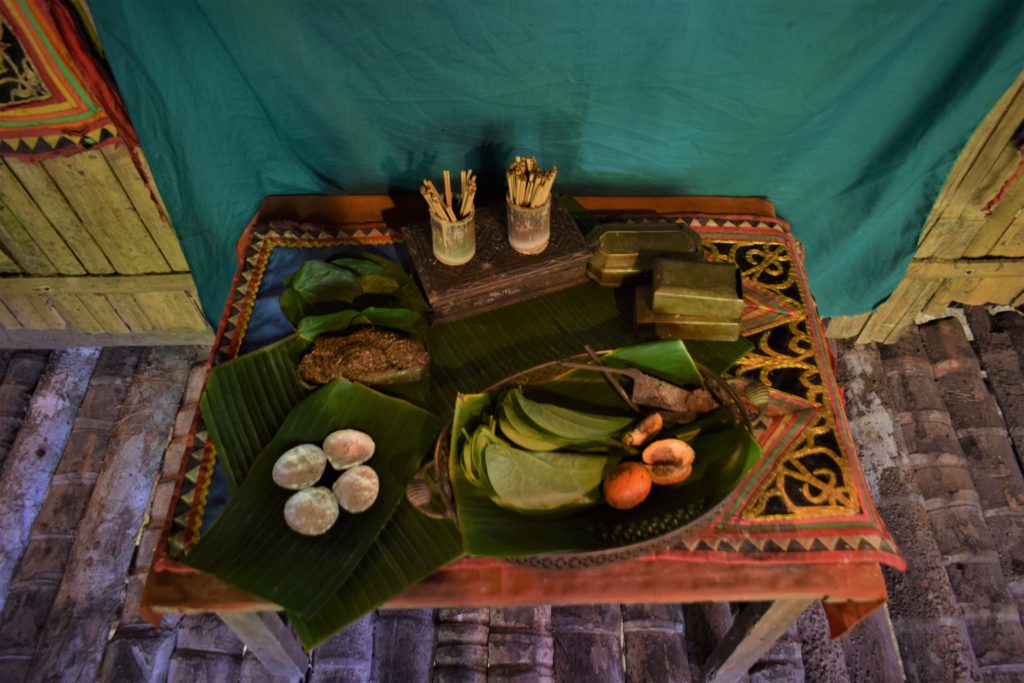
♣ Taste the traditional food of the different tribes, there are many vegetarian snacks too
♣ Taste the traditional rice wines of the tribes of Sabah
♣ Try your skills with the Blowpipe
♣ Get yourself a traditional henna tattoo
♣ Dance with the tribal folk
♣ Get a selfie with a ‘headhunter’
Why You Must Visit Mari Mari Cultural Village
The Mari Mari Cultural Village Kota Kinabalu is a must visit place in Kota Kinabalu, Sabah, Borneo and here are the reasons why we think so:
♣ You get a glimpse of the culture of the different indigenous tribes of Sabah at one place.
♣ Your visit to the cultural village is sure to leave you with a better understanding of Sabah.
♣ The Mari Mari Cultural Village is itself set in the midst of serene rain forest kind of environment and hence is a nice getaway in the midst of nature.
♣ The Mari Mari Cultural Village is a great attempt to keep alive the ancient culture and heritage of the tribes as the people get more and more integrated into the mainstream.
♣ A visit to Mari Mari Cultural Village also contributes towards sustainable tourism of the region as it helps in preserving the culture, the Village also provides employment to the locals.
♣ The visit to the Mari Mari Cultural Village is a fun family getaway full of entertainment and education at the same time.
Tips For Visiting Mari Mari Cultural Village
♣ The tour of the Mari Mari village involves quite a bit of walking and hence wearing comfortable clothes and footwear is advisable
♣ Depending on the time of the visit, it can be hot and humid hence protection from the sun in the form of an umbrella, sunglasses, sunscreen, etc. is advisable
♣ As the village is in the midst of forest terrain mosquitoes and other insects can be found, hence insect repellent protection is advised
♣ If you are buying tickets at the counter you would need to get cash as cards are not accepted.
♣ Do take your camera/smartphone and take pictures to your heart’s content.
Mari Mari Cultural Village – What you should know before visiting (FAQ)
🔸What is the Mari Mari Cultural Village price of the package tour?
🔹There are different packages available for visiting the Mari Mari Cultural Village. The package generally includes hotel pickup and drop as well as lunch, high tea, or dinner depending on the time slot.
The current prices are RM 180 for adults and RM 150 for children between 5 to 11 years. The entry is free for smaller children. The evening slot is priced slightly higher at RM 210 and RM 190 and is available when there is a booking of a minimum of 30 PAX. For more details and current prices check out the official site of the Mari Mari Cultural Village.
🔸 How can the Mari Mari cultural village booking be done?
🔹 You can contact the Village directly on the contact details available on their official website. Currently, there is no Mari Mari cultural village online booking.
🔸 What is the Mari Mari Cultural Village Timings?
🔹 The morning Mari Mari Cultural Village Half Day Tour, Sabah, Malaysia starts at 10 am and gets over around 1 pm in the afternoon. The afternoon tour is from 2 pm in the afternoon to 6 pm in the evening while the evening tour is from 6 pm to around 10 pm. If you have opted for hotel pickup and drop, the time for the same needs to be factored in.
How to go to Mari Mari Cultural Village
The exciting cultural tour to Mari Mari Cultural Village can be done as a half tour from Kota Kinabalu, Sabah, Malaysia.
We have curated the best Mari Mari Cultural Village tours here. You may take a look and book the best that suits you:
Mari Mari Cultural Village tours by Klook
Mari Mari Cultural Village tours by Viator
Mari Mari Cultural Village tours by GetYourGuide
Mari Mari Cultural Village Final Impressions
The Mari Mari Cultural Village makes for a nice getaway from the urban center of Kota Kinabalu. It provides a cultural orientation of the region of Sabah and its people. We recommend the visit as it is definitely going to enrich your knowledge and also an act as a relaxing and fun experience for the entire family.
We hope you find our Mari Mari Cultural Village travel blog useful and that it answers many of your questions. We also hope that the Mari Mari Cultural Village photos pique your interest to visit this living museum in Kota Kinabalu, Sabah, Malaysia.
Do revert back if you have any questions about the village or if you want to add anything to our Mari Mari Cultural Village blog. We look forward to your inputs to make our travel blogs more interesting and interactive. We leave you with a few Mari Mari cultural village images to ponder over.
Suggested read:
Things to do in Kota Kinabalu – Sabah, Malaysia
We were hosted by Sabah Tourism, Travel Earth and Malindo Air. However, the views and opinions expressed here are our own.
Do You Love Traveling?
Do you want to know how to travel the world? We have put together a very useful travel resources page with the best travel tips. Go check it out now. Thanks for visiting our site Voyager - imvoyager.com and taking the time to read this post! If you wish to collaborate/work with us then reach us at [email protected] We’d love it if you’d comment by sharing your thoughts on this post and share this post on social media and with your friends. Follow our journey on our social media channels: Facebook X Instagram Pinterest YouTube
Start dreaming about your next adventure with Tripadvisor. Book your next unforgettable experience here with flexible bookings and free cancellations.
Flight booking online at the best fare
60+ Million Users Trust TripAdvisor With Their Travel Plans. Shouldn't You?
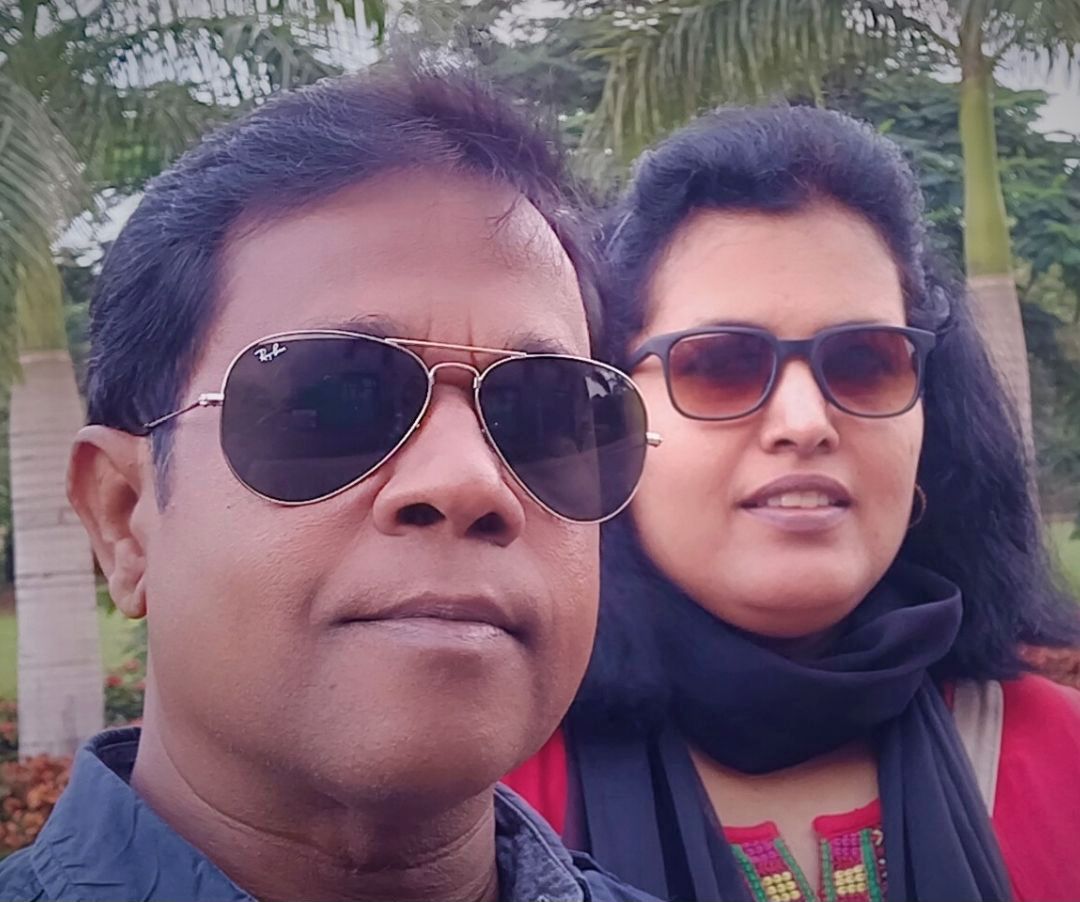
Sandy & Vyjay are a husband and wife duo who are travel content creators. They are co-founders of this travel website and are one of the leading travel content creators in India.
Sandy & Vyjay quit their successful corporate careers to pursue their passion for travel and writing full-time. Their dedication has earned them the “Best Travel Writer” award and numerous accolades on both national and international stages. Focusing on India’s destinations, heritage, and culture, they are passionate advocates for nature and the environment. Through their content, they promote ecotourism and sustainable travel, inspiring others to explore and preserve the beauty of India.
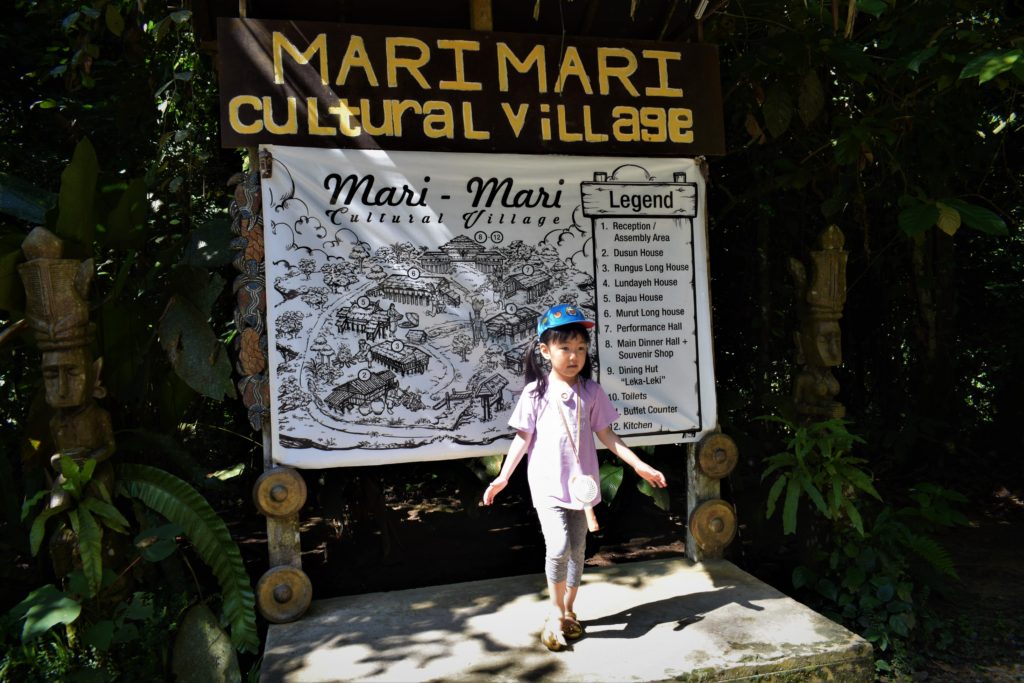
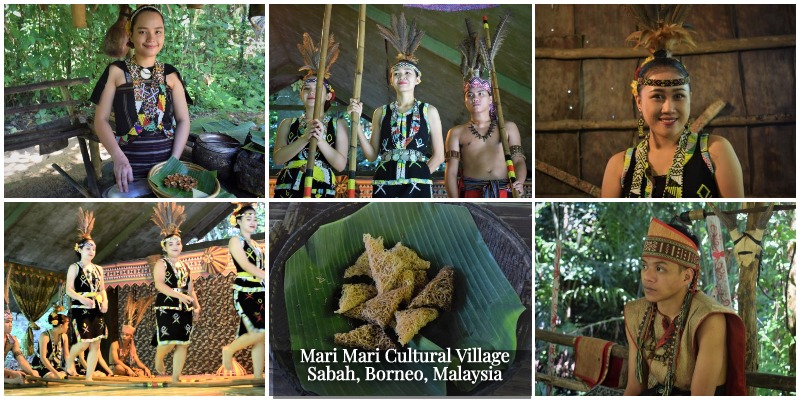
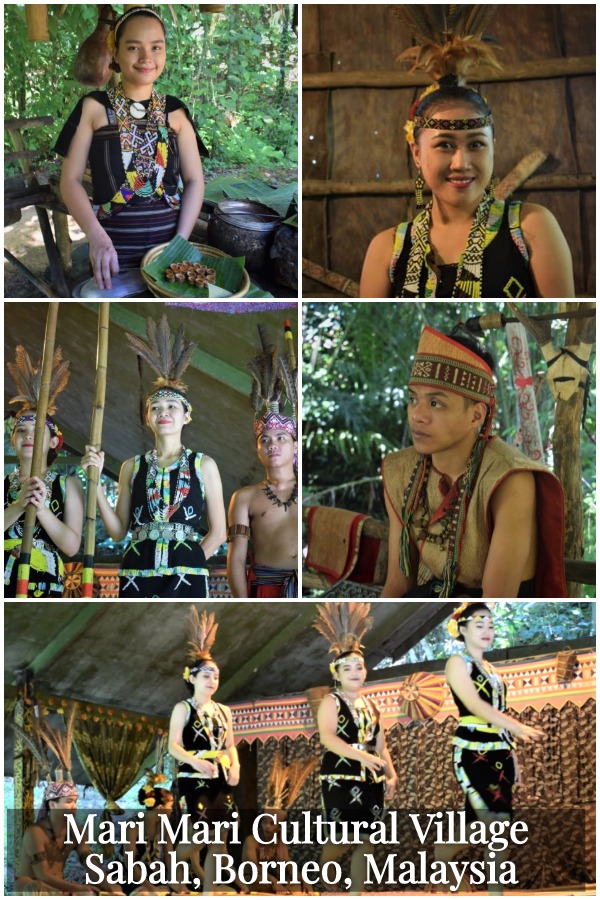

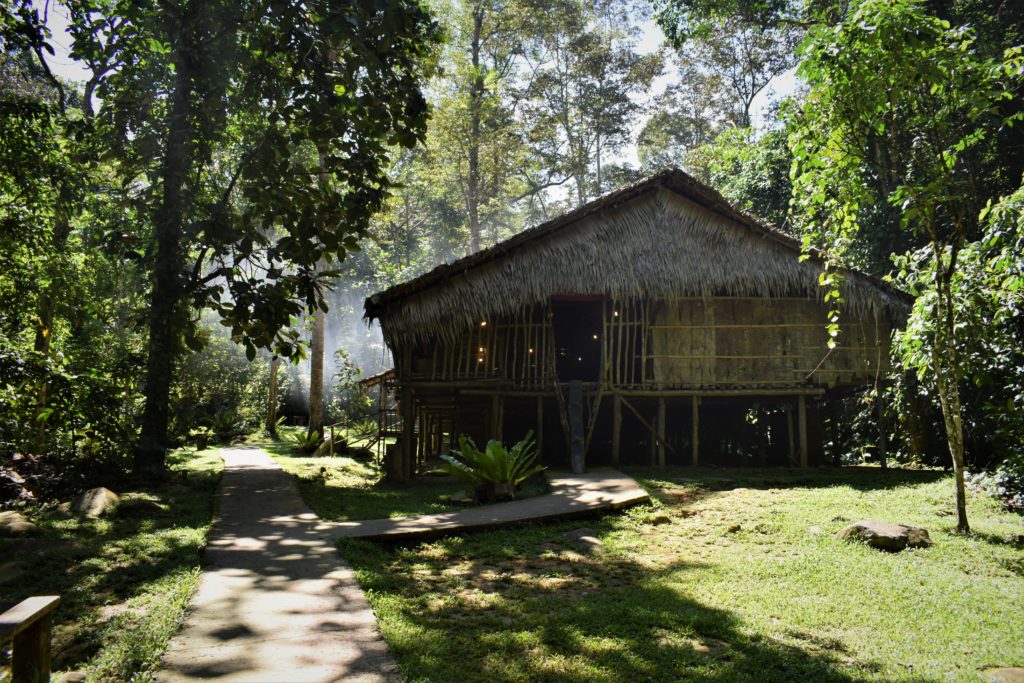
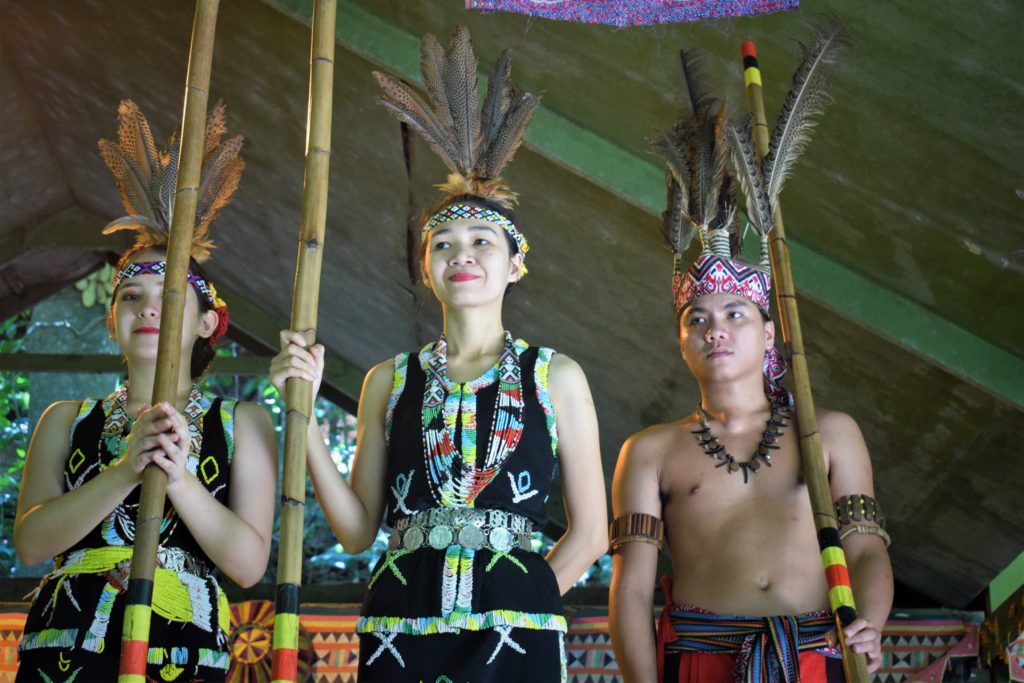
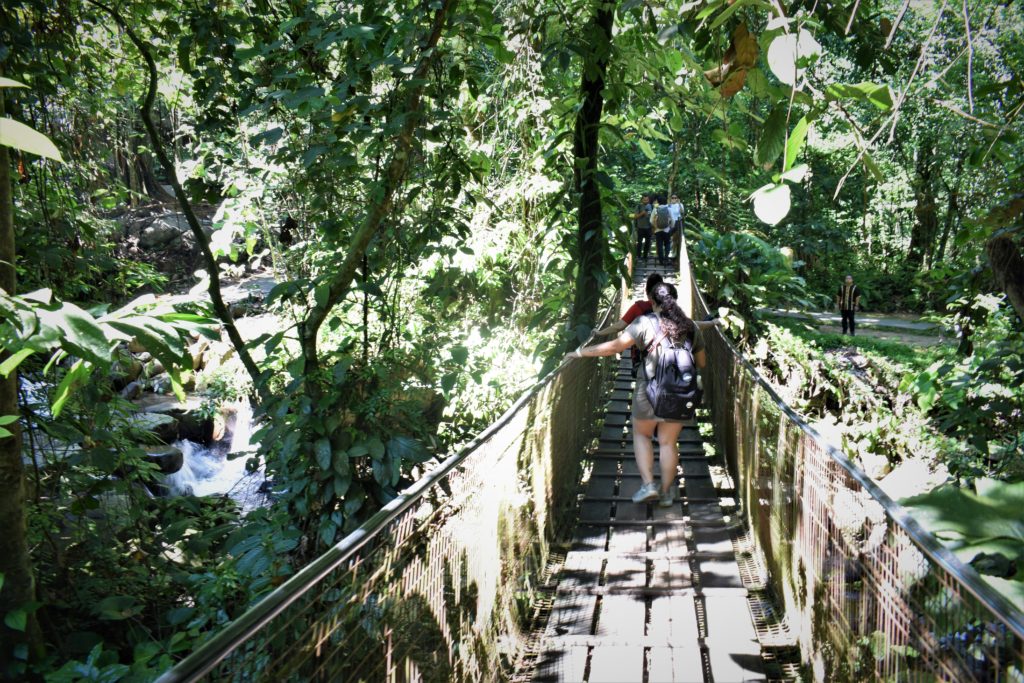

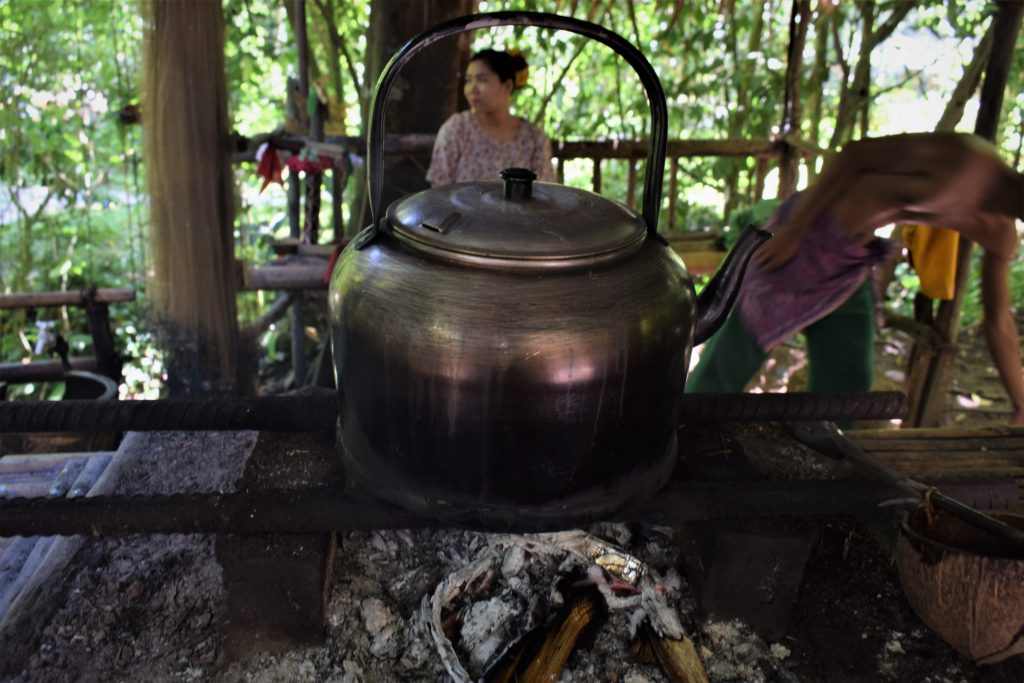
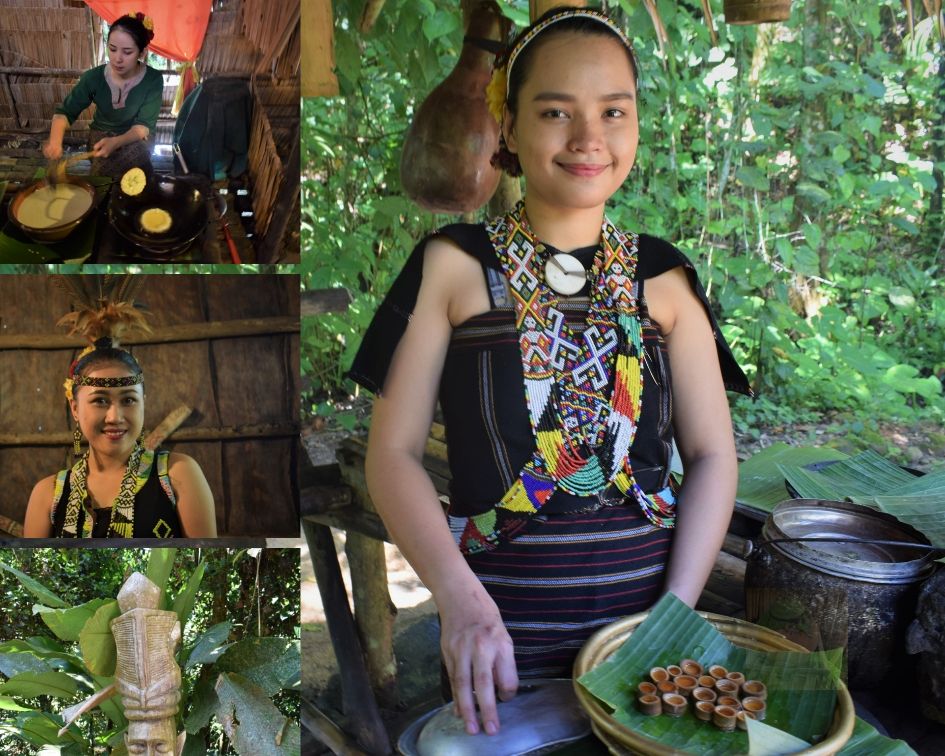






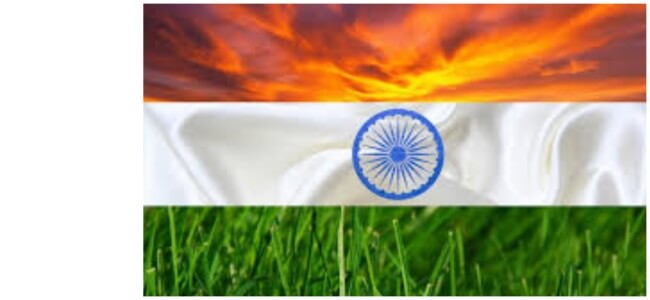
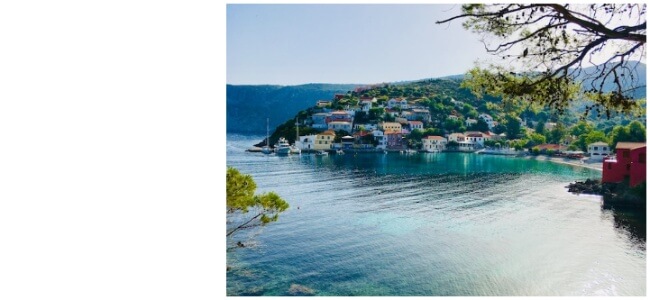
This looks like a great way to get to experience the local culture! I visited a similar Maori village in New Zealand and it was an amazing experience. Even if they are replicas, it is very neat to get to go inside the traditional Mari Mari longhouses and sample the food. The area looks very beautiful – I like the swinging bridge and the wedding setup is so gorgeous and colorful.
Excellent photos of the Mari Mari Cultural Village. It was many years ago when we visited Sabah and after reading your article I am interested to return and visit the Mari Mari Village. I am interested in learning more about ethnic groups and their way of life. I am glad that you have covered ‘vegetarian’ options as well. Thanks.
You have got some wonderful pictures about Mari Mari Cultural Village. I adore the way they live without being influenced so much by the outsiders.
This sure looks like an interesting experience! I have never heard of this village and here I though I knew Malaysia decently well. The Murut tribe entrance must have been a sight to behold especially with their hunting reputation.
This is quite a cultural experience! I didn’t visit Sabah when I traveled to Malaysia, and I have to say, I think I missed on seeing some great cultural sights. While this village may come across a little touristy, no doubt, travelers will learn a lot about their traditions, and also try some of their rice wine. The bamboo shoot cooking method was interesting!
Wow! What an incredible experience it is to be able to witness the culture and lifestyle of these tribal people! I feel so fascinated by merely reading about these tribes. I can imagine how amazing the experience must have been for you to visit their houses, taste their food and wine, know their native cooking methods and their beliefs. The traditional longhouse is definitely a great example of community living. I’ll make sure not to miss this tour on my trip to Malaysia.
Such a nice and detailed post , a virtual tour kind of , would love to visit Malaysia now 🙂
I would love to visit Mari Mari cultural village.Travel to local villages,meeting locals and trying the traditional food sounds exotic indeed.
I love that the Mari Mari Cultural Villages takes the time to educate visitors about the different tribes in Malaysia. Like you said, it’s so important to understand a country’s culture and history to truly appreciate the sites and experiences you take in during your vacation. It allows for a great understanding and more immersive experience. I would be most excited to learn how to cook the foods and taste them! I definitely would love to sample some rice wine during my stay.
What a great experience to learn about Sabah people. You don’t just visited the village, but you got to see them cooking, tasted it, and watched their traditional dance, too. My uncle is a Kadazan-Dusun, but I know nothing about their culture until I read your post.
My bucket list will keep increasing if I keep reading your travelogues. Beautifully penned with great pics.
Utpal Khot
I have been to Malaysia twice but always been restricted to the touristy areas. Thanks to this article, I am definitely adding this to my list for next time!
I too love learning about different culture and especially local people. This looks so interesting and colorful. Great that you enjoyed your trip to the core.
Thanks for sharing the mari mari cultural village tour…loved all the pics nd how beautifully u pointed out minor details of the village..hope some day ill get a chance to see it
I loved how you have given every minute details of Mari Mari. Your blogs can acts as an itinerary if I ever plan to visit such picturesque places.
The place look breathtaking, the lush greenery is soothing to eye, that’s such a indepth post on the tribe I have learned them in my school days.
This is such a detailed post on Malaysia tour . i love it..We are also visiting Malaysia in September.
I love the way you have shared every tiny tiny things . this is really helpful for so many . Malaysia is really beautiful and i am going to visit soon.
Mari Mari Cultural looks really amazing. I liked all the pictures. Would love to visit there sometime.
Mari mari village looks so beautiful. Very few people would have visited this place. Only reason for that is no one includes it in their itinerary.
Very detailed review and am bookmarking it for my next Malaysia visit. Such an heritage place!
I wasn’t aware of their beautiful culture. Great that a lot of information is added to my knowledge about their culture and village. The place looks so beautiful.
I love taking the tour of different countries through your posts ! Yet another beautiful post with all the information I would ever need to visit this place ! Thanks !